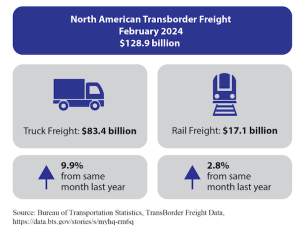Denham Statement from Field Hearing on Continued Oversight of the California High-Speed Rail Project
posted by AJOT | Aug 30 2016 at 09:20 AM | Intermodal
Subcommittee on Railroads, Pipelines, and Hazardous Material Field Hearing on “Continued Oversight of the California High-Speed Rail Project.”
Opening Statement
(Remarks as Prepared)
First let me thank our hosts here at the Federal Building in San Francisco for their generosity in using this beautiful space. I also want to welcome our distinguished witnesses and thank them for testifying today.
This is the third hearing that I have held on the California High Speed Rail project since I became chairman of this subcommittee. Continued oversight of this project is important, not just to California, but for the Nation as well.
This project has been awarded nearly $4 billion in Federal funding, and it represents nearly forty percent of all high speed rail funding awarded by the Federal Railroad Administration. That’s why I’ve focused on this project since I became Chairman of the Railroads Subcommittee, and unfortunately I’ve watched as costs have gone up and up, and the project’s plans have changed.
When the voters of California approved Proposition 1A to fund this project, they thought they were approving a $33 billion project that would receive equal parts financing from the State, Federal Government, and Private Investors. However, since then costs have risen to $43 billion, then to over $100 billion, and now the total cost is estimated at $64 billion, but without connections to San Diego or Sacramento.
The 2016 Business Plan recently approved by the Authority also has a new focus: connecting the Central Valley segment with the Bay Area via an electrified Cal-train corridor, with no near-term progress on closing the existing rail gap across the Tehachapi Mountains in Southern California.
Today, I want to explore what was originally promised to Californians when they approved Prop 1A in 2008, where the project stands now, and whether there is a realistic plan to complete the project that was sold to voters in 2008. And, we must know how much will the Federal taxpayer be on the hook for this project.
Meeting that project mandate may be even more difficult than before if the 25 percent set-aside from the California Cap and Trade program does not produce the revenues the Authority is counting on. The early Cap and Trade auctions have not raised the revenue the state has been expecting, and I look forward to discussing my concerns on that issue today.
I’m also happy that FRA Administrator Fienberg could be with us today, as her agency recently amended the grant agreement with the Authority for the sixth time. I want to discuss the changes made in that agreement, and also talk more broadly about what the ongoing Federal involvement in this project will be.
California voters narrowly approved this project’s finances in 2008, based on a business case that is radically different than what we see in the Authority’s plans today. If this project is going to move forward beyond current activities, we need to know what more State or Federal funds would be buying.
If the Authority can’t provide specific deliverables and a timeframe, then I believe it would be time for Californians to go back to the polls to vote on whether to continue this project.
We have many problems facing California, most notably one of the worst droughts the state has ever seen. The money allocated to this project was part of the federal stimulus package yet here we are nearly 10 years later with nothing to show for it.
In a state grappling with a lack of adequate water infrastructure we could have built long term sustainable water storage for a fraction of the cost. There are many shovel ready projects that will directly benefit millions of California residents immediately.
It’s unfortunate that the state, and this administration doesn’t have the same political commitment to providing a reliable water supply to California as it does to funding a bullet train that has not, is not, and will never deliver on the promises that were made to voters.







